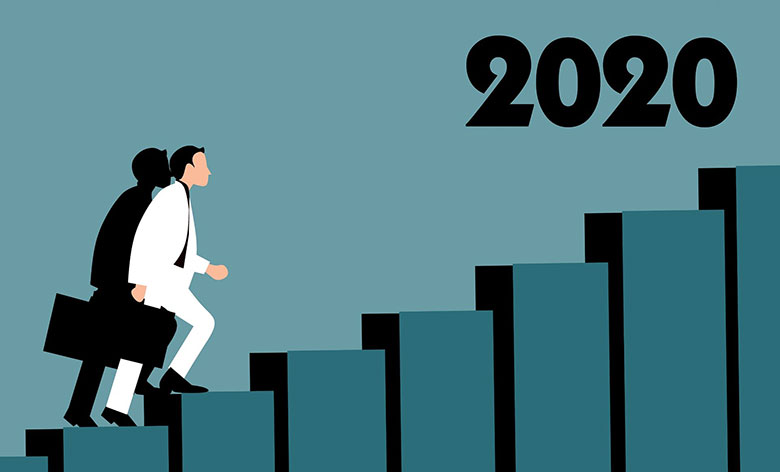As another year – indeed, another decade – draws to a close, global investors are naturally preoccupied by trade frictions and geopolitics to the extent that longer-term trends and differentiated risk dynamics seem to go ignored.
Indeed, despite these issues, Euromoney’s country risk survey shows no fewer than 124 countries, more than 70%, have seen their risk scores improve over time, with higher scores (indicating less risk) on a five-year trend.
Interpreting the statistics is complicated by periodic improvements to Euromoney’s scoring methodology since the survey started in the early 1990s. Implementing a new, enhanced scoring platform in Q3 2019, for instance, has had an impact on recent absolute scores, but not, generally speaking, the relative rankings or longer-term trends.
Countries such as Cyprus, Greece, Iceland, Portugal and Slovenia, which were hit hard by the banking and sovereign debt crises, are still bouncing back, as they have done quite vociferously since 2014.
Others, including Moldova, Myanmar, Nepal, Ukraine and Uzbekistan, have shown similar amelioration, but they are much higher-risk options, with triple-digit rankings on Euromoney’s global risk scoreboard, pointing to the fact they are more vulnerable options.
In an era increasingly defined by Sino-American coopetition in all sectors and geographies, expect Egypt and Romania to be courted by Washington and Beijing
– M Nicolas Firzli, Singapore Economic Forum
The survey produces some other interesting statistical facts.
One is how far Serbia (now 72nd), Honduras (78nd), Ethiopia (79th) and Cote d’Ivoire (95th) have climbed through the rankings. Their risk scores have been consistently upgraded for more than a decade, often preceding credit rating actions which highlights the predictive qualities of the survey.
Another shows how medium-risk India (56th), Vietnam (84th), Kenya (91st) and Nigeria (97th) have generally made more measured progress, held back by ineffective policymaking, often slow reforms, shining a light on their political risks.
This leaves Egypt and Romania as two stand-outs.
Both are showing solid improvements in the survey metrics during a six-year horizon and have been upgraded in 2019.
One of the survey contributors with his finger on the global pulse is M Nicolas Firzli, chair of the Singapore Economic Forum and advisory board member of the World Bank Global Infrastructure Facility.
He says a trait they share is “their unique geo-economic status, right in the middle of the greater Eurasian continuum, which senior policymakers and CEOs in Beijing and Singapore call the New Silk Road”.
Egypt
Egypt in particular has been attracting attention since the Muslim Brotherhood lost its grip on authority.
Six years ago, the government was controlled by “a radical theocratic organization hostile to basic financial notions such as interest rates and foreign investment”, says Firzli.
Undoubtedly, there are still risks associated with authoritarianism and the elections next year, including the poll to renew the legislature now scheduled for November, but the economic climate is vastly improving.
Investment is responding to the reforms introduced under president Abdel Fattah el-Sisi and guided by a completed three-year lending programme from the IMF.
Real GDP growth is seen nudging up close to 6% in 2020, the IMF predicts, after slipping below 3% in 2012 and doing so again in 2014.
Inflation and unemployment are down, and the government has utilized the dissolution of fuel subsidies – which passed without unrest – to increase wages and pensions, while the fiscal deficit is improving as tourism increases and borrowing costs decline.
Firzli, who recently visiting Cairo, notes: “The Egyptian Exchange of Cairo and Alexandria, the oldest in Africa and the MENA region, is now thriving again. Earlier this week, the exchange launched a highly innovative short-term securitization bond programme for stockbrokers, asset managers and other non-bank entities.”
Romania
Turning to Romania, he mentions that he sees it as “another counterintuitive financial miracle”, remarking on the fact its economic performance has been impressive and will likely continue to beat expectations.
“By any measure, including sectoral diversification and the quality of financial reporting, the Bucharest Stock Exchange has been one of the best performing financial markets in the past four years.”
Firzli is, moreover, confident that Romania will continue to surpass its EU and Balkan peers in 2020.
Forecasts from the European Commission would seem to endorse this, showing economic growth at a slower but sustainable pace of 3.6% next year, higher than western European norms, an unemployment rate of 4.2% and less inflation.
High civil-service wage growth and slower growth had posed a risk to the fiscal deficit and public debt ratios. However, after recent political upheaval, a new minority government led by the National Liberal Party – essentially right-leaning – took over in November, planning a multi-year strategy to push the fiscal deficit down from 4.4% of GDP in 2019 to 1.5% by 2023.
Comparison
The two countries are different, of course, not least the fact Romania is 54th in Euromoney’s global risk rankings, with Egypt much lower, lying 93rd.
Yet Firzli is insistent that comparisons can be made.
“In an era increasingly defined by Sino-American coopetition in all sectors and geographies, expect Egypt and Romania to be courted by Washington and Beijing,” he says. “That is not a bad position to be in when seeking long-term financing and sweetheart trade deals.”


 Signal2forex.com - Best Forex robots and signals
Signal2forex.com - Best Forex robots and signals




